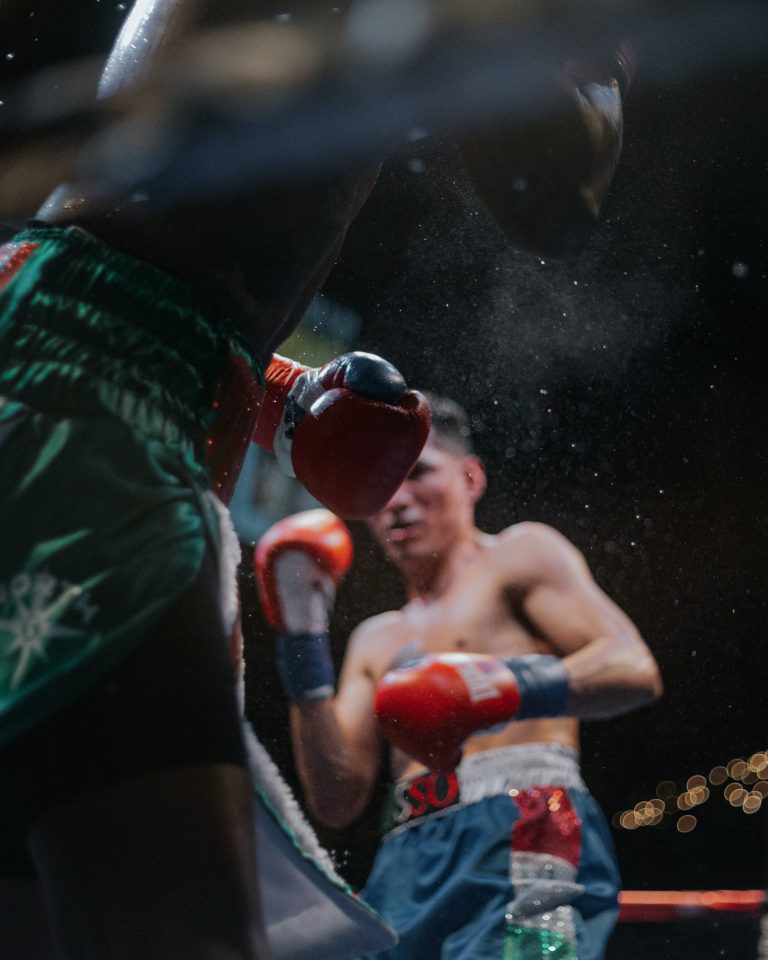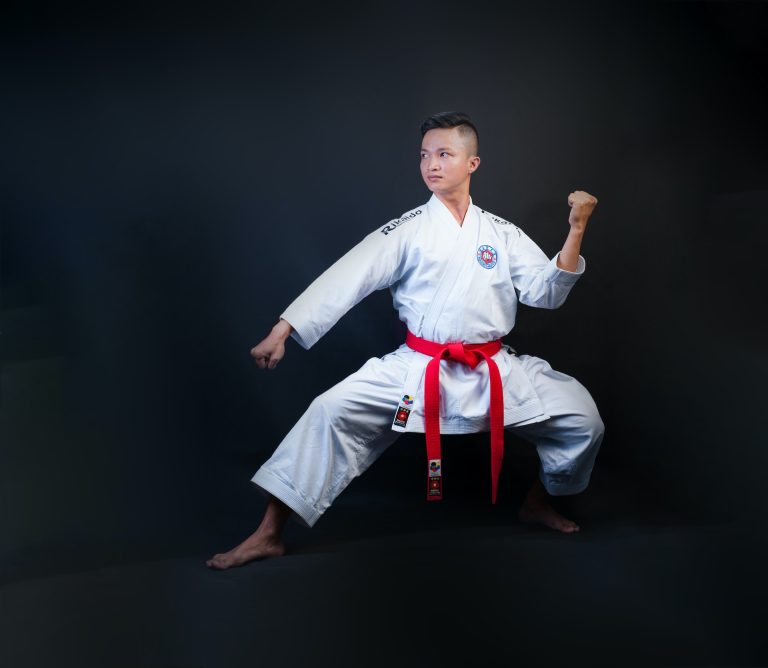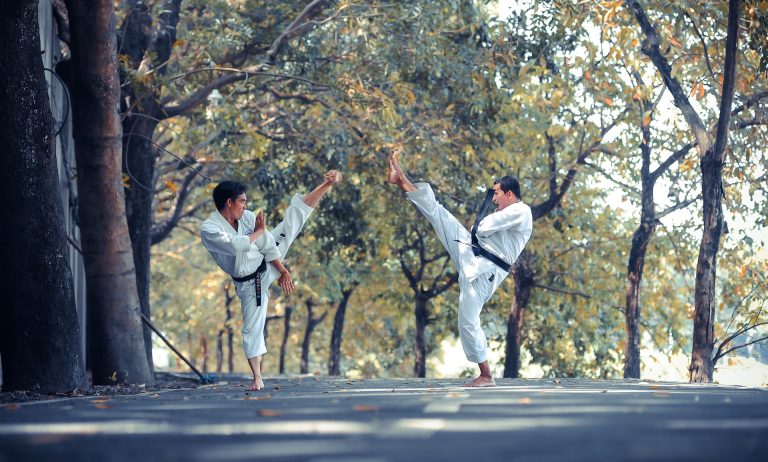What Color Are the Karate Belts: An In-Depth Look
Karate is a popular martial art that originated in Okinawa, Japan. It’s not only about physical fitness, but it also involves mental well-being, discipline, and self-defense techniques. One of the iconic traditions of karate is the belt ranking system.
Karate belts have different colors, indicating a practitioner’s level of proficiency. There are several colors in the karate belt system, and each one represents a specific skill level. In this blog post, we’ll explore the history of the karate belt system and the meaning behind each belt color.
The History of the Karate Belt System
The karate belt system originated in Okinawa in the early 20th century. Back then, karate masters didn’t use belts to indicate rank. Instead, they used ropes or sashes made of different colors to identify students‘ skill level.
In 1920, Gichin Funakoshi, the founder of Shotokan Karate, introduced the modern karate belt system that is still used today. Funakoshi decided to use the belt color system to motivate students and give them a sense of progress in their training. The first belts he used were white, brown, and black.
Karate Belt Colors and Their Meanings
The karate belt system has changed over time, and now it has a broader range of colors. Each belt color represents a specific skill level that a student has achieved. Here are the different karate belt colors and their meanings:
White Belt
The white belt is the starting point for every karate student. It signifies the beginning of the journey towards mastery of the art. It’s a representation of a student’s innocence and lack of knowledge about karate.
Yellow Belt
The yellow belt indicates that the student has made some progress in their training. They’ve learned basic techniques and are starting to understand the fundamental principles of karate.
Orange Belt
The orange belt is a sign that the student is making progress in their training. They’ve built on the foundational skills learned in the yellow belt, and they’re starting to develop more advanced techniques.
Green Belt
The green belt is a representation of growth and development. Students with green belts have achieved a significant level of proficiency and can perform many techniques with ease.
Blue Belt
The blue belt is a sign that the student is starting to master the art of karate. They’ve developed a deep understanding of the complex techniques involved and can perform them with precision.
Purple Belt
The purple belt signifies that the student is approaching the level of a black belt. They’ve developed exceptional abilities and deep knowledge of the art of karate.
Brown Belt
The brown belt is a representation of a high level of proficiency and mastery of karate. It signifies that the student is close to becoming a black belt and has developed exceptional skills.
Black Belt
The black belt is the highest rank in the karate belt system. It signifies excellence in the art of karate and represents the student’s mastery of the discipline.
The Different Colors of Karate Belts Explained
Karate is a martial art that is known for the different levels of expertise that are signified by the varying colors of belts. Karate belts are a source of pride for practitioners, and each color represents a certain level of skill and knowledge. In this blog post, we will answer some of the frequently asked questions about what color karate belts are and what they represent.
What are the different colors of karate belts?
There are 10 colors of karate belts in total, with each color representing a certain level of achievement. The traditional order of karate belts from beginner to advanced is as follows:
1. White
2. Yellow
3. Orange
4. Green
5. Blue
6. Purple
7. Red
8. Brown
9. Black
10. Red and White
What does each color of karate belt represent?
White Belt – This is the starting level, indicating the beginning of the journey to mastering karate.
Yellow Belt – Represents the student’s first steps toward acquiring basic knowledge and understanding of karate.
Orange Belt – Indicates a significant improvement in the student’s understanding of fundamental techniques.
Green Belt – Demonstrates progress and growth in skill, knowledge, and understanding of karate techniques.
Blue Belt – Symbolizes the broader knowledge and understanding of karate, including new techniques and strategies.
Purple Belt – Indicates the student’s particular style and mastery of techniques with precision and strength.
Red Belt – Represents expertise in both knowledge and skill and is usually given to students who master specific training programs.
Brown Belt – Indicates that the student is refining their skills, knowledge, and physical abilities.
Black Belt – Indicates the highest level of skill and mastery in karate, representing years of hard work and dedication.
Red and White Belt – A symbol of the student’s experience and mastery, showing a deep understanding and dedication to karate.
How long does it take to get a black belt in karate?
The time it takes to earn a black belt in karate varies depending on the individual and the style of karate they practice. Generally, it takes at least several years of dedicated training for a student to reach black belt level.
For example, in Shotokan Karate, it typically takes around four years for someone to achieve their first-degree black belt. Those who aspire to higher ranks may need to spend many more years studying and practicing.
Is there a difference in belt color between karate and other martial arts?
The colors of karate belts are generally the same throughout most martial arts disciplines. However, different disciplines may have different numbers of belts or even different meanings attached to each belt color. It is always best to check with the specific discipline or school to see what their belt colors represent.
What Color are the Karate Belts?
Introduction
Karate is a popular martial art that originated in Okinawa, Japan. It involves a series of techniques, movements, and maneuvers that require strength, agility, and discipline. One essential element of karate is the colored belt system. In this system, students of karate are promoted from one level to another based on their skill level and experience. Each level is represented by a different color of belt. In this blog post, we will go through the different colors of karate belts, what they mean, and how to achieve them.
White Belt
The white belt is the starting point for all karate practitioners. It signifies a clean slate and a willingness to learn. A beginner in karate will typically start with a white belt and perform various techniques and forms to progress to a higher level. The white belt can also represent the moon, which is low in the sky and provides minimal light, indicating the newbie’s lack of knowledge.
Yellow Belt
The yellow belt is the first level a student achieves after they have mastered some basic karate techniques. It represents the dawn, symbolizing new beginnings and a brighter future. A yellow belt karateka is expected to have a better understanding of basic techniques such as punches, strikes, and blocks. At this point, they are more confident and have developed some level of proficiency in the martial art.
Orange Belt
The next level up is the orange belt, which signifies a more in-depth understanding of the fundamentals of karate. An orange belt karateka has a better understanding of the basic principles of the martial art and has developed more advanced techniques such as throws and joint locks. The orange belt can also represent the sunrise, symbolizing the growth and progress of the student’s abilities.
Green Belt
A student who has achieved the green belt has a better understanding of advanced karate techniques. The green belt signifies growth and maturity from the student’s basic White Belt beginnings. The karateka will have perfected techniques such as kicks, punches, and blocks and will have started practicing more complicated katas (forms). The green belt may also represent the growing plant, symbolizing continued growth in the karateka’s abilities.
Blue Belt
The blue belt is the next level up from green and represents the sky, which is vast and boundless. A blue belt karateka is expected to have an increasing understanding of the fundamental principles of karate while beginning to specialize in specific moves. These students are close to achieving a level of proficiency that enables them to become an instructor someday.
Purple Belt
The purple belt symbolizes a growing maturity in the student. The karateka at this level not only knows the techniques and some of the underlying principles behind them, but they can demonstrate applications backed by theory. The Purple Belt level also prepares the student for more advanced training that will lead them to reach Black Belt status.
Brown Belt
The brown belt is the second-highest level before the coveted black belt is achieved. It represents more significant progress and higher maturity in the student’s skills. By this time, the karateka should have mastered most of the basic techniques in karate, including katas, self-defense moves, and sparring techniques. Those who attain the Brown Belt level have rarely participated in tournaments and instead lean towards mastering their skills.
Black Belt
The Black Belt is the highest rank in the karate belt system. It represents proficiency, technical excellence, and a deep understanding of the martial art. It signifies the end of one road, and the start of another. Along with the Black Belt, one begins a life-long journey of improvement, not only representing the highest level of skill but also to provide guidance for students who strive to master the same discipline.
Conclusion
The journey through the ranks of karate belts is one of the marks of the mastery of the martial art. Each color represents an increasing level of proficiency, knowledge, and experience. It not only demonstrates the physical aspect of karate but also the perseverance, spirit, and mental fortitude one needs to advance to higher levels. Although many people pursue learning Karate to advance through the belt ranking system, the focused practice and dedication provide many other life benefits.
Inhaltsverzeichnis






